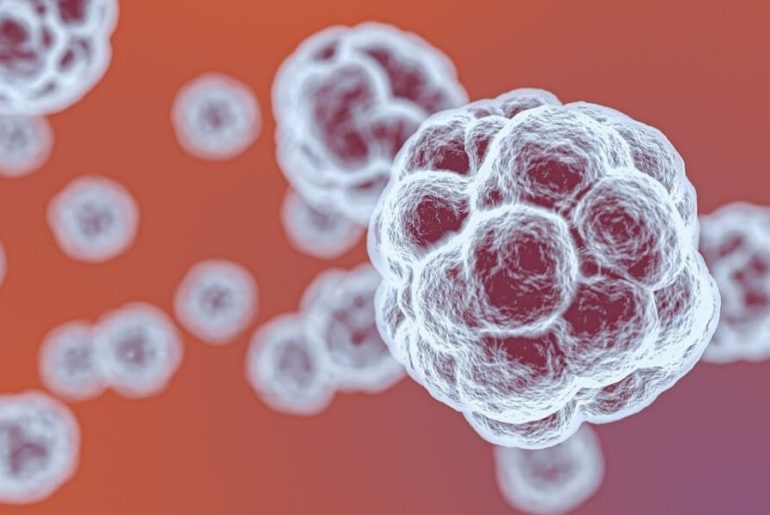Scientists and researchers have spent a majority of 2020 racing to find ways to flatten the curve and stop the spread of the highly-contagious Covid-19. But, what if they have been looking in the wrong place?
That is what Jose-Luis Jimenez, a Professor of Chemistry and a Fellow of the Cooperative Institute for Research in Environmental Sciences at the University of Colorado-Boulder, argued in his TIME magazine column. In the piece, titled “COVID-19 Is Transmitted Through Aerosols. We Have Enough Evidence, Now It Is Time to Act”, Jimenez argued that changing the way we think about how Covid transmission occurs could lead us to find a better strategy when combating the disease.
Jimenez, who according to TIME is a “highly cited researcher and a Fellow of the American Association for Aerosol Research and the American Geophysical Union,” insisted that there has been a misunderstanding in how we think the virus is spread; and he is not alone in his conclusions.
Back on July 6th, Jimenez and 239 other scientists appealed to the World Health Organization (WHO) to reevaluate the importance of “airborne” transmission (we’ll explain more of that later) when it comes to the coronavirus. Although WHO did update its position in response, Jimenez argues that the agency’s language “continues to express skepticism of the importance of this pathway.” So, what is airborne transmission and what does it mean for the future battle against Covid?
The Three Ways Of Transmission
There are three main ways in which a virus can be transmitted: fomites, droplets and airborne (often referred to as “aerosol”) transmission.
The first one, fomites, is one that has been particularly emphasized by the WHO. Fomites are objects (it could be one’s own skin) that are contaminated with the virus after coming to contact with it. This is where washing your hands comes in useful, as the particles on this infected area could lead to transmission if they make their way to the eyes, nose or mouth.
The Center for Disease Control and Prevention (CDC) now says that even though it is still a possible form of infection, it is not the most common one. Jimenez points out that viruses that have a lipid envelope, like in the case of the coronavirus that causes Covid-19, “do not survive long on humans hands”.
The second way, and one that has also been highlighted by the WHO, is droplet transmission, tiny bits of saliva or respiratory fluid that are released by infected persons as they cough, sneeze or speak. This type of transmission has been promoted by the CDC and the WHO as the main form of Covid transmission. However, Jimenez points out that multiple studies show that droplets are only important when coughing and sneezing, and it is believed that talking in close proximity plays the biggest role in Covid transmission. Furthermore, although not impossible, droplets would have to immediately fall in a person’s eye, nose or mouth for them to become infected. In fact, when talking, the most relevant manner of transmission is the third way: aerosols.
Jimenez compares airborne transmission to cigarette smoke – thick enough that it can stay in the air for a couple of minutes after exhaling, but thin enough that it can easily spread and dissipate with some wind.
However, airborne transmission is by far the less talked about form of transmission when it comes to Covid. Jimenez argues that the big reason dates back more than 100 years ago, when Dr. Charles Chapin wrote a book in which he dubbed airborne transmission “almost impossible.” Since then, the scientific community has been quick to rule airborne transmission out, even after it was proved that tuberculosis, which was thought to be transmitted through droplets for decades, can in fact only be transmitted through aerosols.
Why Understanding Transmissions Can Make a Difference
Because of the scientific community’s skepticism when it comes to airborne transmission, not a lot of barriers have been put into place to prevent it. While it never hurts to implement measures to combat the other types of transmission, ignoring airborne transmission might prevent a complete flattening of the curve.
For instance, while hand-washing is a good measure against transmission, the study of a United Kingdom intensive handwashing national effort revealed that the program only led to a 16% transmission reduction in the country. It is for this reason that preventing all types of transmissions is crucial to ultimately stop the spread of Covid-19.
What To Do Moving Forward
Jimenez maintains that the CDC and WHO’s previous guidelines are still useful. That includes washing your hands, keeping a distance of at least six feet, and, most importantly, wearing a mask. However, he adds that it is not enough.
In order to fight airborne transmission, he proposes a new set of recommendations: Avoid Crowding, Indoors, low Ventilation, Close proximity, long Duration, Unmasked, Talking/singing/Yelling (“A CIViC DUTY”).
While being outdoors will not protect people one hundred percent, it will make it easier for the virus to dissipate in the wind. Coming again to the smoking allegory, if you are in a room with a person that smokes you are more likely to inhale smoke yourself than if you are in a park or an outdoor space.Talking, singing and especially yelling produce a big amount of aerosol, and doing so within a safe distance of one another can make all the difference in the world.
Jimenez suggests that schools should follow the example of what schools did to avoid the spread of tuberculosis a century ago. He suggests having classes outside and setting up tents to make up for classrooms. When being outside is not an option, he warns that ventilation should be considered. He suggests opening windows and replacing old ventilation systems at home.
Finally, the use of masks is strongly recommended, however, Jimenez warns that a loose-fitting mask may not be as effective, so it is important to wear the mask properly.

